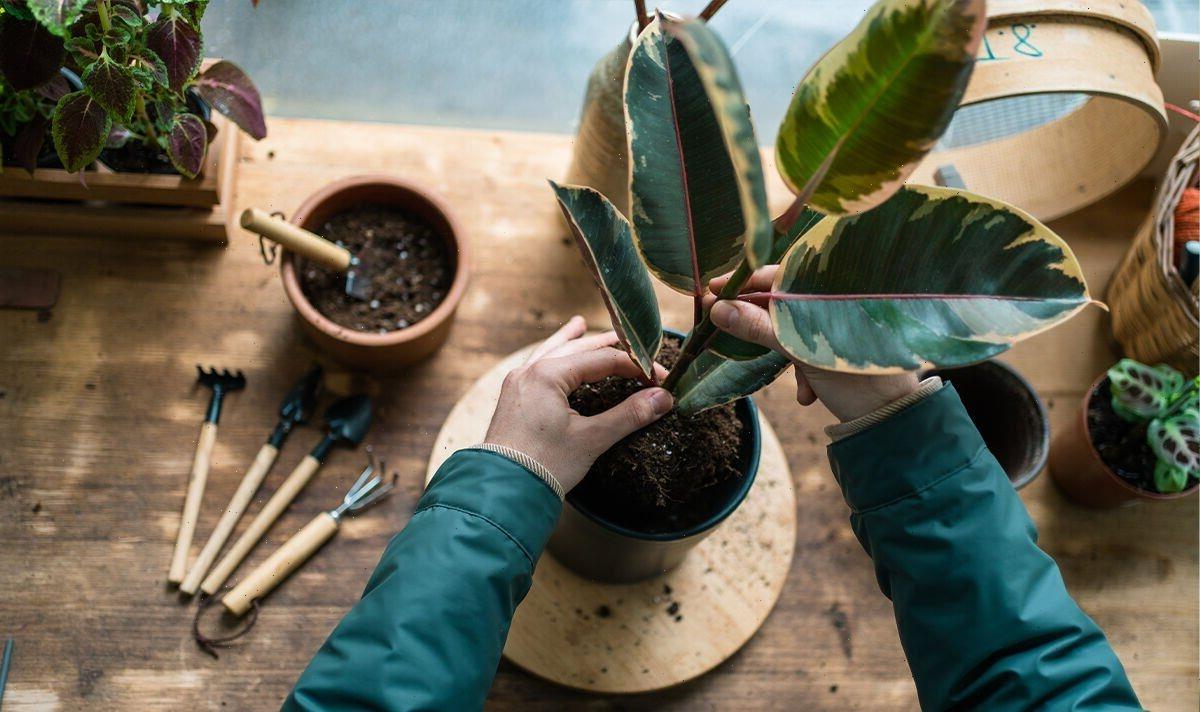Houseplants: RHS advises on watering techniques
We use your sign-up to provide content in ways you’ve consented to and to improve our understanding of you. This may include adverts from us and 3rd parties based on our understanding. You can unsubscribe at any time. More info
Houseplants are a great way to add a splash of colour to the home but can be difficult to get to grips with, especially if you are just beginning your indoor plant journey. While plants are often used as decorative features in the home, repotting them into a decorative pot to match your home decor straight away can end up “shocking” the plant and causing it to wilt or even die.
Canadian TikTok creator Our Barnes Yard shares videos on plant, DIY and home decor, and has urged green-thumbed people: “Don’t make this plant mistake.”
While she acknowledges decorative pots can add to the aesthetic of a room, she says many beginners often put their plant into a decorative pot without considering its needs. In a video for her audience of 129.7K, the creator said: “Have you been making this beginner planet mistake?
“Racing home with new plant babies and repotting them directly into the decorative pot? This doesn’t ensure good drainage and can cause shock for your plant.”
Drainage is crucial for potted plants to ensure their roots do not become soaked in water, which can lead to root rot. If your plant is submerged in water for too long, this creates a perfect ideal for the condition.

@ourbarnesyard Don’t make this plant mistake! #planttips #planttok #plants #plantoftiktok #houseplant #houseplantlover #planttip ♬ original sound – @ourbarnesyard
Ensuring there is room for excess water to move away from the roots is just one way to avoid this from occurring.
The TikTok plant enthusiast says she has a “better way” to re-pot new plants without exposing them to the risk of root rot. “Keep your plant in the nursery pot it came in,” she said. These nursery pots, while not necessarily pretty, have drainage holes to allow water to escape.
“Just slip it into the decorative pot,” she explained. “Your new plant will be a lot happier. In six to 12 months you can size up to the next nursery pot.”
DON’T MISS
Interior designer says common home layout is ‘officially’ out [COMMENT]
Mould will ‘vanish’ from bathroom sealant and grout with 95p spray [EXPLAINER]
Banish toilet limescale ‘effectively’ without harsh chemicals [INSIGHT]

However, if you do prefer to re-pot straight into a decorative pot, the plant expert recommends looking for those which have holes built in. She added: “I like bottom watering too.”
Bottom-watering, also known as reverse watering, is when you place a plant in a bowl of water, allowing the soil and roots to soak water from the bottom up. This allows the plant to only take the water it needs.
Once it has had time to hydrate, you can then remove the plant from the water and return it to its position in your home.
Naturally, for this process to work, your pot needs to have drainage holes in the bottom.

Three houseplants for beginners
If you are only just embarking on your houseplant journeys and are concerned about a care schedule, there are some plants which are easier to look after than others.
Boston Fern
Boston Ferns are popular houseplants for beginners and make a great addition to the bathroom as they thrive off humidity. They don’t require much sunlight, but should not be overwatered. Instead, make sure not to let its soil dry out.
Parlour Palm
This exotic plant is native to the likes of Mexico and Guatemala, however, it has been popular in UK homes since the Victorian era. The palm has great air purifying qualities and is easygoing with regards to light, water, room temperature and humidity. Maintain well-drained soil and if the top becomes dry make sure to give it some water.
Snake Plant
Snake plants can be watered once every two weeks and prefer soil to dry out between watering. These plants prefer to be in a bright room, though out of direct sunlight.
Source: Read Full Article
